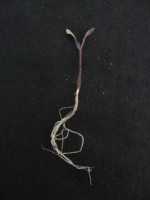Tips to Find the Best Organic Transplant Mediums

The use of vegetable transplants has increased steadily in recent years. The advantages of using transplants are many: uniform and robust growth, healthy root system, and earliness in crop harvest. They are also generally free of pest and diseases. Production of transplants, especially organic, involves advance planning and optimum utilization of available greenhouse resources. This is more critical in the case of vegetable transplants like tomato, pepper, and celery that are in the greenhouse for longer periods (six to eight weeks).
Growing transplants organically calls for meticulous planning and must follow the rules laid out by the National Organic Program. Growers need to plan their course of action well in advance in order to produce viable and healthy transplants for field production. One of the most essential components of any transplant production operation is the growing medium.
Growing medium provides a suitable environment for seed germination and supplies support and nutrients for subsequent growth of seedlings.
Finding The Right Medium
Many commercially prepared organic mixes and blends are available, but they can be expensive and might not meet organic standards. Starter fertilizers and wetting agents in those mixes limit their use under National Organic Program standards.
Most organic growers either grow their own transplants or buy them from local markets. When growing transplants, special emphasis should be given to the quality of the growing medium. It should be uniform, have proper structure and texture, and should also provide essential nutrients. Most common ingredients of a growing medium are peat, vermiculite, and compost.
Use of compost has become one of the central planks of any organic production enterprise. Media comprising of a combination of peat and compost provides adequate aeration, improves water holding capacity, and serves as a nutrient source for the emerging seedlings. Compost also promotes the growth of beneficial microorganisms in the rhizosphere/root zone.
Even though compost is an excellent nutrient source, proper monitoring and handling is necessary for its use in organic transplant production. Growers should verify the source of compost in order to eliminate the presence of harmful microorganisms, pests, heavy metals, and other toxic substances. It is important to use optimum quantities of compost when formulating a growing medium. Incorporation of large quantities of compost in transplant medium can lead to increased salinity which adversely affects seed germination and seedling growth. Based on our experience, we have found that a transplant production medium comprising of peat, vermiculite, and compost in the ratio 2:1:1 (by volume) serves as an excellent transplant production medium.
Transplant nutrition
One of the biggest limiting factors for organic transplant production is the supply of nitrogen. Addition of compost alone in the growing medium does not meet nutrient requirements for optimum transplant growth. Moreover, transplants remain in the greenhouse for six to eight weeks, depending upon crop type, which brings up an additional factor of providing and managing an efficient nutrient supply. To provide nitrogen and other additional nutrients, growers should incorporate, top dress, or liquid-feed transplants with organic fertilizers and amendments.
Organic fertilizers that can be incorporated include blood meal, alfalfa meal, soybean meal, hoof and horn meal, and feather meal, among others. Results from our lab on the use of an alfalfa-based amendment (Bradfield Organics) for organic tomato transplant production have been promising. The alfalfa meal amendment tested produced healthy and quality transplants similar to those produced with synthetic fertilizer (20:20:20), however, it is important that the amendment is used in the proper way.
It is also very important, to avoid any germination problems, that the amendment is incorporated in the media and incubated for one to two weeks before seeding. Many plant- and animal-based fertilizers need to be incubated with potting media for one to two weeks before being used for seeding. Liquid and foliar fertilizers are also an excellent source for providing quick and readily available nitrogen. Some soluble organic nitrogen sources include fish emulsion, worm castings, compost tea, and seaweed extract.
In general, formulation of organic transplant production medium needs careful manipulation of ingredients like compost. Use of plant- and animal-based amendments together with compost can enhance transplant growth. In addition, use of such amendments help recycle plant/animal residues for the production of nutrition supplements for greenhouse transplant production.









